This Merida Silex 700 may be lower down the brand's gravel range of bikes but, with a mixture of some major tweaks to the geometry and overall design for 2024, plus a great selection of kit it is an affordable gravel machine which is capable of taking on more technical terrain than most. With some rather classy paint jobs the whole range looks great, too.
- Five things that weren't cool - until gravel happened
- Scott Addict Gravel 10 gravel bike review
- Gravel bike suspension and dropper posts - do you need them?
Merida Silex 700 gravel bike - Technical details
The Silex has been around for about six years now and, as capable as it was, things have moved on in the gravel world. This 2024 model has seen a lot of changes to bring it up to date in terms of tyre clearance, the possibility of it being run with a suspension fork and to give it an even better ride experience.
Merida says its designers were keen to keep everything that worked well from the original, so the actual riding position has barely changed. What set the original Silex apart from most gravel bikes was that it took its geometry cues from the mountain biking world, unlike the majority of others which stem more from the road and cyclo-cross genres.
This gave you a tall head tube and a lengthy top tube for the frame size compared to other gravel bikes and therefore a tall stack height, although the reach measurement was kept in check by running a shorter stem. The majority of that is still the same. If we take the medium size which we have here, the top tube is just 1mm longer at 580mm and the bike still runs an 80mm stem.
The biggest change is the head tube which is 30mm shorter on the new bike at 170mm, but also much slacker. This new bike is running at 69.5-degrees compared to 71-degrees on the previous iteration.
The fork length here has increased from 397mm to 415mm which not only allows for a bigger tyre clearance and means that the Silex is capable of running a suspension fork without it affecting the handling.
Speaking of tyre clearances, they have been improved to 47mm on a 700c wheel up from 42mm on the previous model, aided at the rear by dropping both chainstays. Merida says that the only benefit to running a 650b is to allow for a larger tyre width, so having this amount of clearance for 700c wheels means there is no need to run the smaller wheel option.
The Silex will also take mudguards. Running them knocks the tyre clearance down to 42mm.
These changes to the rear end have still allowed the Silex to run both 2x and 1x chainsets, plus you’ll also find a switch from a press-fit bottom bracket to a BSA threaded one. A welcomed change for a bike designed to be used in muddy and dusty conditions.
Aesthetically there are some changes too. The Silex now runs the gear cables and brake hoses directly into the head tube for a much cleaner front end and the area around the seatstays/seat clamp has been redesigned. On the carbon models, the seat clamp now sits internally but these aluminium offerings still use an external one.
There are some additional mounting points on the 2024 model with two on the upper face of the top tube near the stem for a bag, while you’ll find another two on the bottom of the top tube near the seat tube end. The fork legs now have three mounting points per leg rather than just two.
The full carbon fibre fork also has internal routing for a dynamo light.
The Silex Lite II frame uses Prolite 66 tubing which is made of a 6066-grade aluminium alloy which responds well to hydroforming according to Merida. The frame’s tubing is also triple-butted which can control the balance between stiffness and comfort.
The welding isn’t the smoothest from an aesthetics point of view but it does look functional and I’d say confidence inspiring when you are hitting rocks and potholes out on the trail.
There are five sizes on offer ranging between XS to XL and to fill in the geometry gaps for this medium frame the seat angle is 74.5° while the stack and reach figures are 607mm and 412mm respectively.
The wheelbase is 1,082mm which is around 20mm longer than previously, with 430mm chainstays. Bottom bracket drop is 75mm.
Merida Silex 700 gravel bile - Componentry
The 700 uses Shimano’s new 12-speed GRX 820 1x groupset with a 42T chainring (46T is the largest the frame can run) and 10-51T cassette.
As I said above, you get a good spread of gears. A little gappy in places due to the range on offer but not a huge issue overall.
The shifting is clean and crisp even when the groupset is covered in dust or mud from previous rides and I’m a big fan of the shape of the hoods here. The GRX 820 shifters have embossed lines on the top which helps with grip especially when trying to brake on a descent in the wet or with sweaty hands.
Merida has made the Silex compatible with 180mm rotors which is what you get at the front, and a 160mm on the rear. Both provide ample stopping power regardless of how you've loaded it up. I’m a fan of the modulation and feel on offer from this GRX brake set which helps control speed and reduces the chance of the wheels locking up on loose terrain.
Away from the group though you’ll find a lot of Merida’s own finishing kit and it’s all decent stuff. The Expert GR II handlebar is aluminium and comes with a shallow drop and a gentle flare which gives loads of accessible hand positions and offers good control over the bike when in the drops due to the wider stance.
The stem is also aluminium although the Expert CC seatpost gets an upgrade to carbon fibre. It’s 27.2mm diameter as opposed to the 30.9mm found on the original which should in theory bring a little more flex and therefore comfort to the ride.
The saddle is a Merida Expert SL and was decent enough for me. I prefer shorter-nosed saddles, but this one was comfortable thanks to its minimal padding. A neat touch is that Merida includes a small multi-tool in a sealed holder beneath it. It’s a cool addition and means you never leave the house without it.
Merida has gone with a pair of Easton’s EA70 AX wheels which worked well. They use an aluminium rim which is 24mm wide internally so much better suited than the own-brand 19mm wide rims used on the previous Silex 700 to wide gravel tyres.
Throughout the review period, they showed themselves to be reliable and with a claimed weight of 1,760g they aren’t too heavy to affect the overall ride.
They are tubeless ready which is probably a route you’ll want to go down for off-road riding. The 45mm Maxxis Rambler tyres are too so other than some valves and sealant you won’t need to spend anything else for the conversion.
The tyres are decent performers on hardpacked and dry trails though the lack of tread depth is needed for wet and muddy conditions. They roll well, are reasonably grippy and are robust.
Merida Silex 700 gravel bike - Performance
The Silex is a lot of fun to ride and I think a lot of that comes down to the stability that is noticeable throughout helped mostly by the slacker head angle.
The handling is well balanced and smooth making it ideal for technical sections of gravel trail and I found the Merida to be a lot of fun when barrelling it down through some singletrack in my local woods. If I was doing some kind of gravel race and an aero position was key the Silex might not be my first choice due to the tall front end, but for everywhere else it's very capable, even confidence-inspiring for riders new to the sport or gravel genre.
The frame and fork have a good ride quality which when paired with the relaxed riding position means that the Silex is a very good mile muncher. That easy-to-live-with handling means that it is not altered in any way when you load it up with bikepacking kit or frame bags. The bike is rated to a max load of 120kg with 3kg on each fork leg possible.
I found that I could spend many hours on this bike without feeling fatigued at any of my contact points. A massive bonus on tough trails especially if you are riding a long-distance route with no let-up.
The GRX groupset gives a good spread of gears and the bike isn’t heavy, so climbing is a pleasure. Again, the tall front end helps here as you don’t put much pressure on your lower back which means I could stay in the saddle even for the steepest climbs.
The handling, as I mentioned before, also means that the Silex is a surefooted descender and that all adds to the fun. Knowing that I had good ground clearance, I could let the Merida fly on the downhills regardless of how rocky or potholed the track was and with good feedback through the carbon fork and the rear end of the frame I always felt confident I knew what the front and rear tyres were doing.
I really liked the earlier Silex but this new model is better in every way. The whole riding experience feels much more refined, and it is such an easy bike to ride, especially at speed and with increased tyre clearance it feels right at home whatever the terrain.
Overall, Merida has achieved making this a more rounded gravel and adventure bike.
Merida Silex 700 gravel bike - Verdict
The full price for this bike is £2,350 which is £200 more expensive than the 2023 model – but you are getting all the frame and fork improvements plus better finishing kit, especially the wheels. I think it still represents good value for money.
Marin’s Gestalt uses a similar mountain bike-style geometry. The Gestalt XR is a touch cheaper at £2,225 and comes with a SRAM Apex 1x groupset and a dropper post. It also has slightly bigger tyre clearance, too, at 50mm.
Specialized’s Diverge range has geometry more based on the road side of things but has the same tyre clearance as the Silex at 47mm. The closest in price is the Diverge Comp E5 which uses an E5 alloy frame and Fact carbon fork, a 12-speed mechanical SRAM Apex groupset and alloy wheels for £2,500.
Sonder’s Camino is capable of swallowing 50mm 700c tyres and utilises a lengthy wheelbase and a relaxed 69-degree head angle. The geometry isn’t as MTB-orientated as the Silex but it is a very capable gravel bike and with a GRX 610 1x groupset the price comes in at £1,608.99.
Overall, the Silex 700 is a great bike for some gravel fun especially if it’s on the rugged and technical side of things, compared to the smooth and fast trails that are probably more suited to road-based offerings.











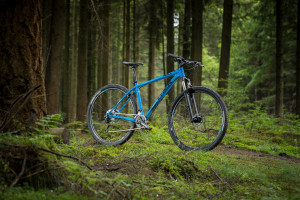


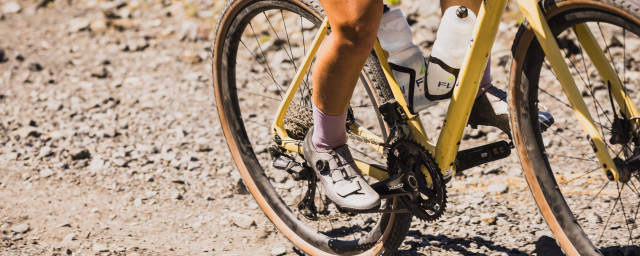

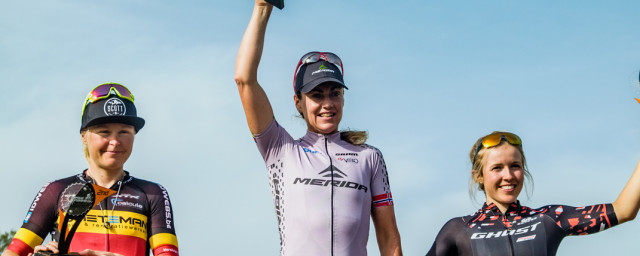
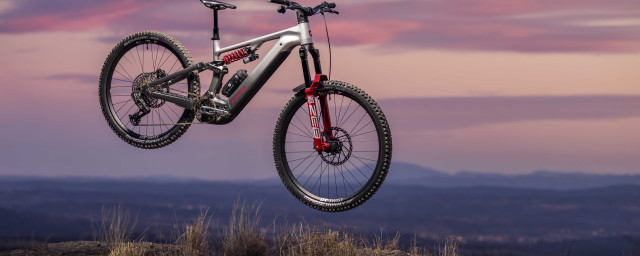

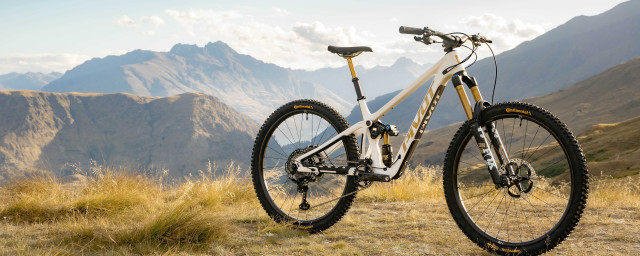
Add comment